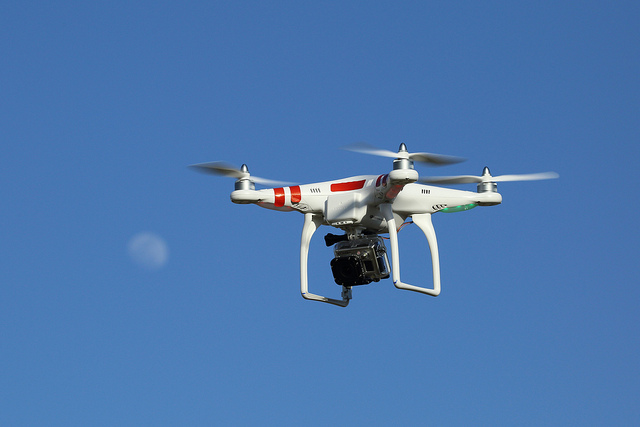"We're at maybe 1% of what is possible. Despite the faster change, we're still moving slow relative to the opportunities we have."
This compelling statement from Larry Page, CEO and co-founder of Google epitomizes the power and potential of emerging technologies. Yet most insurers have difficult comprehending how fast emerging technologies are being introduced. And the pace is gathering speed, having a profound impact on our lives, our businesses and our industry. Moore's Law tells us that computing power doubles every 18 - 24 months, but even that seems to be irrelevant compared with the power of emerging technologies, because they are coming faster, and they are more formidable than ever before.
This rapidly accelerating pace comes at a time when the convergence of advancing technologies, increasing customer expectations and access to capital for new technology start-ups are magnifying the extremes, and the impact to the insurance industry is more game-changing than ever before. Never before has technology advancement had as much influence as what we are experiencing now.
Technologies promise breakthroughs that will challenge long-held business assumptions and shift the boundaries between business and industry – creating completely new businesses and industries. SMA is actively tracking nine emerging technologies: 3D printing, the Internet of Things (IoT), drones/aerial imagery, driverless vehicles, wearable devices, "gamification," artificial intelligence, semantic technologies and biotechnology. We are following them from a perspective inside the industry as well as taking an "outside-the-industry" view.
Not surprisingly, adoption is being led by the Internet of Things (IoT). The IoT is followed by artificial intelligence (AI), drones/aerial imagery and then gamification. The insurance industry's rapid adoption is impressive. Five of the nine technologies are projected to arrive at or go well beyond the tipping point within three years. All nine are projected to surpass the tipping point within five years.
Adding to the momentum, individuals and companies that are a part of SMA's Innovation Ecosystem and represent outside-the-industry perspectives see an even faster rate of adoption and greater potential for the transformation of insurance. This underscores that the insurance industry is on the crest of a massive wave of change.
Over the next five years, these emerging technologies, just like the Internet, smartphones and social media before them, are expected to drive new business models and foster the formation of companies from unexpected combinations of companies and industries — capturing the customer relationship and revenue. The astounding influence of these technologies -- over a relatively short period -- will begin to delineate a new generation of market leaders within and outside the insurance industry. Who will be the next Facebook, Uber or eBay?
So how should insurers respond to this rapid adoption? Insurers must quickly begin to develop strategies and experiment with and invest in these technologies today. If not, many insurers will be placed at significant risk, because there is typically a minimum two-year lag time between leaders and the mainstream and a minimum four- to five-year lag time between leaders and laggards. And given the pace of adoption of these technologies by insurance customers, the lag time carries more potential for damage than it did in the past. Consider that Apple introduced the iPhone just seven years ago, in June 2007. The result has been massive destruction and transformation that has created new leaders while forcing others into increasing irrelevance.
While it may be difficult to grasp the sheer magnitude of the change coming from the emerging technologies, remember that Larry Page of Google says we are only seeing 1% of the potential. Insurers must aggressively find a way to engage these technologies and uncover the potential, first to stay in the game, and then to win it. To do so, insurers must have modern core systems as a foundation to integrate the use of these technologies.
Consider these questions: How will product liability need to be redefined for driverless vehicles? If individuals or businesses no longer need auto insurance, what is the impact on other products? Multi-policy discounts? Will the driverless car encourage shopping for alternative options? Will it drive commoditization into other products? How will insurers assess the value and risk of a 3D-printed structure, body organs or vehicle parts? How will biotechnology-based agriculture change risk factors? How will drones help underwriting and claims? Can drones also provide resources needed during catastrophes, creating new services and value? Could gamification be a new channel to help drive increased market penetration through engagement and education about life insurance, health, medical, liability, home, umbrella and more?
These are but a few of the implications for insurance. They are inter-related and complex. They stress the significant disruption that is coming, and coming fast, as represented by the five out of nine emerging technologies that will reach the tipping point within three years … and some much sooner. Insurers that have not begun to pilot these technologies are already lagging behind and will struggle to keep up with this accelerated pace of adoption, not just from today's competitors, but also from tomorrow's competitors, as well as their customers. That poses a question: Will you remain relevant, or become the next Kodak, Blockbuster Video, Borders or CNN of insurance – the iconic brand that dies?
The coming years hold unparalleled opportunities for innovation and matchless potential for becoming market leaders that leverage emerging technologies to increase customer value, engagement and loyalty to insurers. As Steve Jobs stated, "Everyone here has the sense that right now is one of those moments when we are influencing the future." The question to you is: Will you influence the future or be a remnant of the past?
This article is adapted from a new research report,
Emerging Technologies: Reshaping the Next-Gen Insurer.

